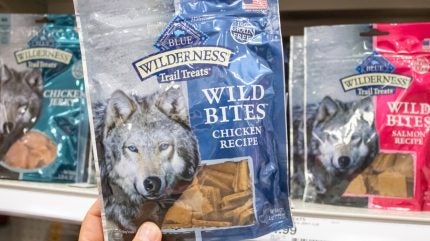
General Mills is banking on a more “benign” inflationary environment in the 2025 financial year but for the time being, costs remain elevated.
“We continue to see input-cost inflation in fiscal 2024,” chairman and CEO Jeff Harmening said as he presented third-quarter results to 25 February.
“While current inflation levels are lower than what we saw over the past two years, they are still higher than the average annual inflation rate we experienced in the decade leading up to the pandemic,” he said.
Looking through the 2025 lens, as headline inflation in the US eased to 3.2% in February, Harmening said: “We still see an inflationary environment.
“To the extent we can have a more benign inflationary environment and a supply chain environment, we don’t see the disruptions we’ve seen, combined with good productivity, that’s a good start.
“We’ve seen inflation is slowing, although there still is inflation, and we’ll know a lot more about what to expect out of the top-line performance in a couple of months.”
In such an environment, Harmening said General Mill’s “first line of defence” against inflation is its holistic margin management (HMM) strategy to boost efficiencies and cut costs, which remain on target for a 5% reduction in 2024.
“At the same time, we’re delivering a strong level of cost savings. We are also working to optimise our working capital and reduce our inventories,” he added. “We made nice progress on this front in Q3, with our inventory balances at their lowest levels since the second quarter of fiscal 2022.”
Nevertheless, third-quarter sales were down 1% at $5.1bn on both a reported and organic basis, “with lower pound volume partially offset by favourable net price realisation and mix”, General Mills said in the results commentary.
However, year-to-date sales rose by the same magnitude for the two metrics to $15.1bn, with the company citing the same causal factors.
For 2024, General Mills stuck with its guidance for organic net sales to be in a range of down 1% to flat. Both adjusted operating profit and adjusted diluted earnings per share are expected to increase 4-5% in constant-currency terms.
Adjusted operating profit rose 14% in the third quarter to $914m and was up 9% year-to-date at $2.8bn. Adjusted diluted EPS climbed 22% in the three months to $1.17 and 11% for the year so far to $3.51.
Net income was up 21% for the quarter at $670m but dropped 2% year-to-date to $1.9bn.
Speaking with analysts yesterday (20 March), Harmening was challenged on the outlook for General Mill’s ice-cream business following this week’s announcement from Unilever that it plans to demerge and list its own operations in the category.
“We like our ice-cream business,” he countered. “Häagen-Dazs is a great brand and that's a super-premium brand and it's growing nicely. It's good in Europe, it's really good in Asia, it's one of our five global platforms, so we obviously like the category."
In terms of portfolio “reshaping” and potential acquisitions, Harmening was asked for some insight.
“We really haven't changed our approach to portfolio shaping. We were pleased with what we have done and the 20% change we've made so far,” he explained.
“We also know there's more to do both in terms of acquisitions and divestitures to get back to the growth levels that we're looking for. And the place that we're looking at, things that will be growth-accretive.”
He suggested areas like pet food, where General Mills already plays with the Blue Buffalo brand, along with “some meal categories we like”.
The CEO added: “There are a number of places where we could go that would be either in categories we're in or tangential to categories and geographies where we feel like we've got some competitive advantages.”
General Mills’ pet-food sales were under pressure last quarter, falling 3% on a reported and organic basis to $624m. They dropped 2% over the nine months to $1.8bn.
“In our pet segment, we saw a modest improvement in Blue Buffalo’s US retail sales trends in the third quarter, compared to the second quarter of the fiscal year,” Harmening said in his prepared remarks.
“Much of this improvement was attributable to the performance of our Life Protection Formula dry dog food line.”
Pressed for further insight during the Q&A, he explained: “I would say on the wet pet-food side, we certainly have seen improvements. I'm not sure it's all the way back to growth, but we certainly have seen improvements.
“We haven't got them back everywhere yet, so that's still a work in process. And I think that'll play itself out in the fourth quarter.”



